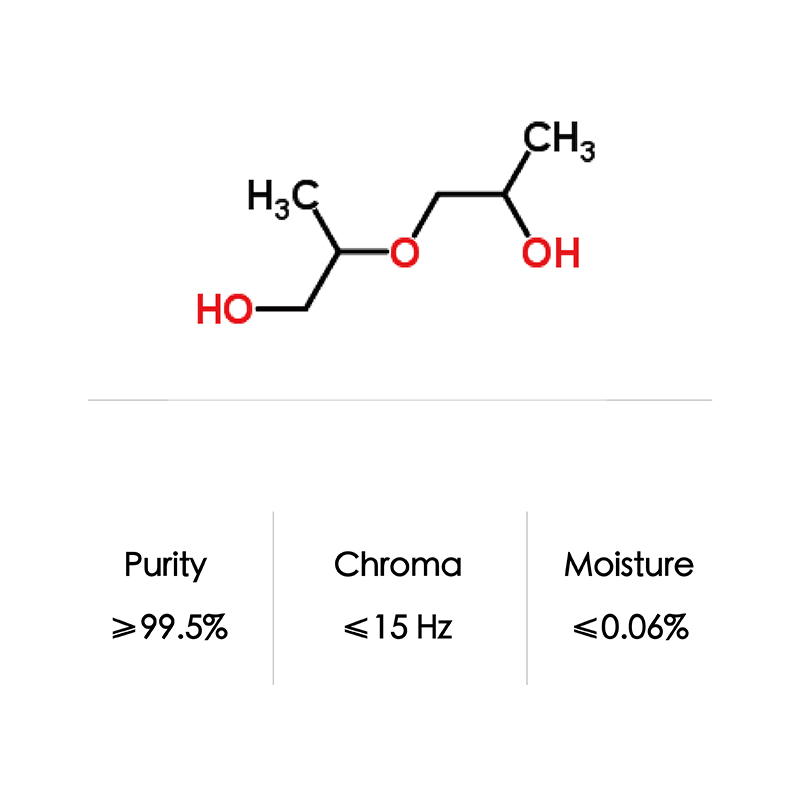
Products
99.5% DPG Dipropylene Glycol for Perfume Garde CAS No 25265-71-8
Product Description
Dipropylene glycol finds many uses as a plasticizer, an intermediate in industrial chemical reactions, as a polymerization initiator or monomer, and as a solvent. Its low toxicity and solvent properties make it an ideal additive for perfumes and skin and hair care products. It is also a common ingredient in commercial fog fluid, used in entertainment industry fog machines.
Properties
| Formula | C6H14O3 | |
| CAS NO | 25265-71-8 | |
| appearance | colorless, transparent, viscous liquid | |
| density | 1.0±0.1 g/cm3 | |
| boiling point | 234.2±15.0 °C at 760 mmHg | |
| flash(ing) point | 95.5±20.4 °C | |
| packaging | drum/ISO Tank | |
| Storage | Store in a cool, ventilated, dry place, isolated from the fire source, loading and unloading transportation should be stored in accordance with the provisions of flammable toxic chemicals | |
*The parameters are for reference only. For details, refer to COA
Application
| Used as nitrate fiber solvent and intermediate in organic synthesis |
1) Dipropylene glycol is the most ideal solvent for many fragrance and cosmetic applications. This raw material has excellent water, oil and hydrocarbon co-solubility and has a mild odor, minimal skin irritation, low toxicity, uniform distribution of isomers and excellent quality.
2) It can be used as coupling agent and moisturizing agent in many different cosmetic applications. In perfumery, dipropylene glycol is used in more than 50%; while in some other applications, dipropylene glycol is generally used in less than 10% (w/w). Some specific Chemicalbook product applications include: hair curling lotions, skin cleansers (cold creams, shower gels, body washes and skin lotions) deodorants, face, hand and body skin care products, moisturizing skin care products and lip balms.
3) It can also take a place in unsaturated resins and saturated resins. The resins it produces have superior softness, crack resistance and weather resistance. (4) It can also be used as cellulose acetate; cellulose nitrate; varnish for insect gum; solvent for castor oil; and plasticizer, fumigant, and synthetic detergent.
Advantage
Product quality, sufficient quantity, effective delivery, high quality of service It has an advantage over a similar amine, ethanolamine, in that a higher concentration may be used for the same corrosion potential. This allows refiners to scrub hydrogen sulfide at a lower circulating amine rate with less overall energy usage.





